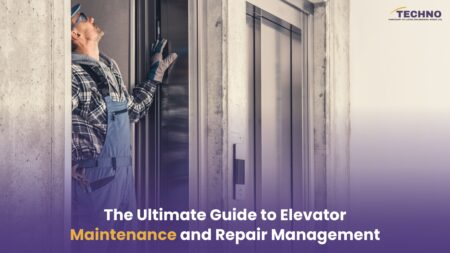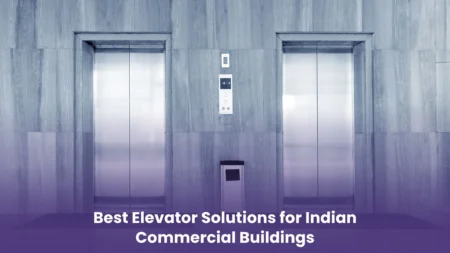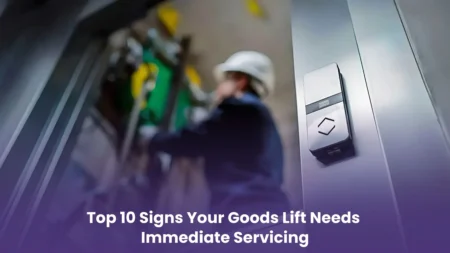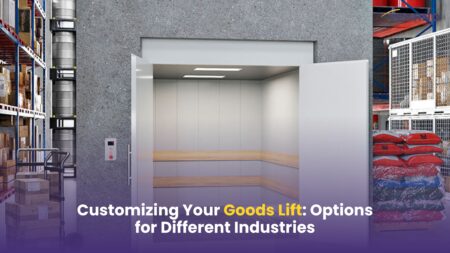Skylines are touching the clouds and so, an elevator has become a necessity rather than just a facility. The vertical transportation like a residential elevator lift in a high-rise home, a passenger lift in a busy office building, or a goods lift in a warehouse, is meant to be smooth, safe, and quick.
Even after knowing the importance of these elevators in daily life, lifts and elevators often don’t receive the attention they deserve. Many building owners and managers only think about maintenance when a problem arises, am I right or not? But by then, it’s too late. A poorly maintained elevator lift creates inconvenience as well as serious safety issues.
If you think Routine maintenance is not that important then think again! Because it’s the only way to:
- Prevent unexpected breakdowns
- Extend the lifespan of critical components
- Meet the safety regulations
- Optimize performance and energy efficiency
- Protect passengers and cargo from potential accidents
So, do you do regular safety and operation check-ups of your elevators? Or waiting for any emergency to happen? Old elevators need to follow these maintenance steps to maximize the safety, efficiency, and longevity of elevators as well as yours.
1. Routine Inspections
Regular inspections are the foundation of effective elevator maintenance. They help identify minor issues before they become costly problems. A professional technician should check:
- Control systems to make sure buttons, indicators, and emergency alarms work correctly.
- Lift motor to monitor for unusual sounds, vibrations, or overheating.
- Brake system to test emergency brakes and holding capacity.
- Doors and sensors to check misalignment, slow operation, or obstructions.
- Cables and pulleys to inspect the signs of wear or tension loss.
What should be the Inspection Frequency?
- For residential and light-use elevators: Every 3 – 6 months
- For commercial and public passenger lifts: Monthly or quarterly
- For high-traffic service lifts or hospital elevators: Monthly or bi-monthly
If you dare to ignore such inspections, it can lead to premature wear, higher energy costs, and safety risks.
2. Preventive Maintenance Over Emergency Repairs
Emergency repairs are costly, disruptive, and often avoidable. Preventive maintenance is a smarter approach to make sure all systems operate under control. You should take these preventive steps:
- Lubrication: Oiling or lubrication reduces friction in moving parts and extends the lifespan of components.
- Load testing: Load testing is to make sure that the car elevator or freight lift can handle its designated weight or not.
- Hydraulic system checks: For a hydraulic lift, maintaining the correct fluid levels prevents failures.
- Software updates: It is mandatory to keep control systems up to date for better energy efficiency and performance.
3. Keep Elevator Interiors and Shafts Clean
A dirty elevator looks unappealing, and unhygienic and can also cause malfunctions. Dust, debris, and small objects can obstruct sensors or jam door mechanisms. A proper cleaning routine should include:
- Door tracks – Preventing buildup that affects alignment.
- Elevator shaft – Keeping the pit area free from dust and debris.
- Buttons and control panels – Preventing dirt from interfering with electrical connections.
For house elevator lift owners, routine cleaning also improves aesthetics while preserving functionality.
4. Energy Efficiency for Long-Term Savings
Elevators are one of the most power-consuming components in a building. Regular maintenance ensures they run efficiently:
- Switching to LED lighting can reduce energy consumption.
- Adjust idle time settings and minimize unnecessary operation.
- You need to maintain proper lubrication to reduce the chances of strain on motors and Small Lift For Home systems.
These steps can significantly cut operational costs without compromising performance of your lifts.
5. Train your Staff and Residents for Emergency Situations
Even with perfect maintenance, unexpected issues can arise. A well-prepared team can prevent panic situations and ensure safety. This training should cover:
- How to respond to an emergency stop?
- Evacuation procedures for trapped passengers
- Manual release protocols for doors
- How to identify early signs of a malfunction
This is particularly important in large residential buildings, hospitals, and commercial properties with heavy elevator usage.
6. Stay Compliant with Safety Regulations
Building codes and elevator safety regulations exist for a reason. Compliance isn’t just about avoiding fines but they ensure passenger safety and reliability.
Make sure your residential elevator lift, commercial passenger lift, and industrial service lift meet local, national, and international safety standards. You can schedule regular third-party audits and maintain detailed maintenance logs to avoid any security hurdles in the future.
When to Consider an Elevator Upgrade?
If your elevator is 15 to 20 years old, maintenance costs may start to shadow the benefits of the elevator. Upgrading to a modern elevator lift for home or commercial passenger lift offers:
- Enhanced safety features
- Smoother and quieter operation
- Smart technology integration
- Lower long-term maintenance costs
At Techno Industries, we provide maintenance for every elevator, whether we installed it or not. If your lifts and elevators are outdated, we can modernize them to meet today’s safety and efficiency standards.
Final Take
A well-maintained elevator is a smart investment because maintenance is about safety, efficiency, and cost-effectiveness. Whether you own a lift for home, a car elevator, or a service lift, regular inspections and proactive maintenance save money and prevent safety risks.
At Techno Industries, we believe the elevators’ maintenance can’t be ignored. We care about your safety that’s why we offer maintenance to every lift that carries your security. If your building’s elevator lift needs servicing, our expert team is ready to ensure smooth, safe, and energy-efficient operation.












